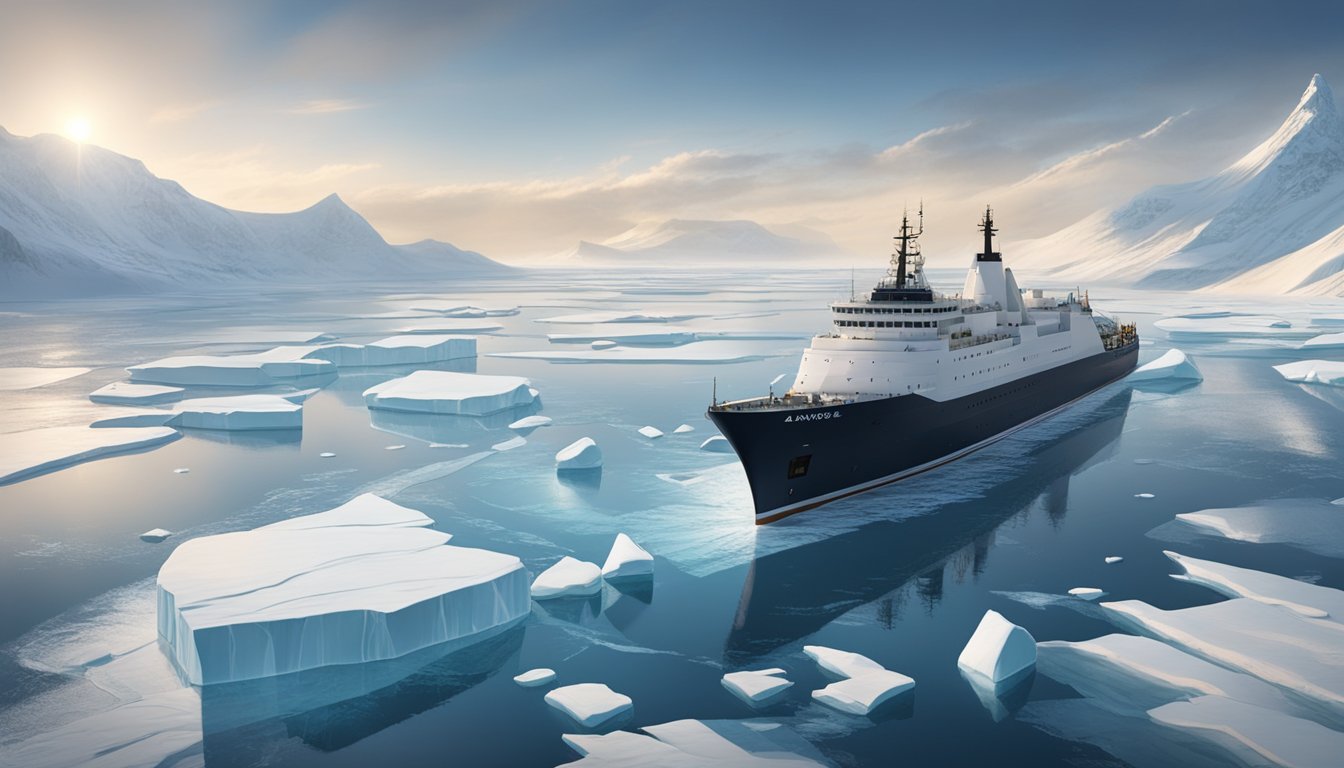The U.S. Coast Guard has bolstered its icebreaker fleet by 50% through the recent addition of the Aiviq, a 360-foot vessel set to be commissioned as the Coast Guard Cutter Storis following some minor upgrades.
This new acquisition represents a significant step in the Coast Guard’s efforts to strengthen its capabilities in ice-covered regions.
Current Fleet and Future Plans
Before the arrival of the Aiviq on November 20, the Coast Guard’s resources were limited to the 399-foot heavy icebreaker Polar Star and the 420-foot medium icebreaker Healy, which have been in service since 1976 and 1999, respectively.
Recognizing the increasing need for operational support in polar areas, the Coast Guard aims to add at least eight new icebreakers to its fleet in the coming years.
While the Storis will primarily operate out of Juneau, Alaska, it will take time to establish the necessary infrastructure for its deployment.
Advancements in Icebreaker Technology
Alongside the introduction of the Storis, the Coast Guard is also moving forward with plans to construct state-of-the-art heavy icebreakers.
On December 19, officials received the green light to start building the first of the Polar Security Cutters.
These vessels will possess advanced capabilities to navigate through thick Arctic ice and will be the first heavy polar icebreakers the Coast Guard has commissioned in five decades.
Despite some delays affecting the project, with initial deliveries projected for this year, the Coast Guard remains committed to accelerating the availability of these crucial resources.
However, specific timelines for delivery still remain unclear.
The addition of the Aiviq to the Coast Guard’s operational framework—now known as the Storis—is aimed at reinforcing Arctic operations during the construction of new icebreakers.
The limitations of the existing fleet were highlighted earlier this summer when an electrical fire on the Healy resulted in the cancellation of a planned Arctic mission.
Strategic Importance of the Arctic
Enhancing the icebreaker fleet aligns with the military’s proactive response to growing challenges posed by China and Russia in the Arctic.
The recently published military Arctic Strategy for 2024 emphasizes the changing landscape caused by climate change, which has opened new maritime routes.
This situation necessitates specialized vessels for effective patrols.
The strategy also highlights escalating military partnerships between China and Russia, prompting the U.S. Navy to increase its presence in the Arctic over the summer.
Within this strategic framework, the Coast Guard acknowledged the mounting security concerns underscored by its latest acquisition.
The Deputy Commandant for Operations at the Coast Guard has recognized the heightened national security risks stemming from the growing collaboration among global competitors in the Arctic region.
Beyond the Coast Guard, other branches of the military are also repositioning resources to address potential threats in the north.
This summer, the Army set up a new command in Alaska that includes two aviation battalions and has conducted rapid deployment drills for paratroopers and missile teams, showcasing their readiness to swiftly respond to emergencies.
Source: Taskandpurpose

